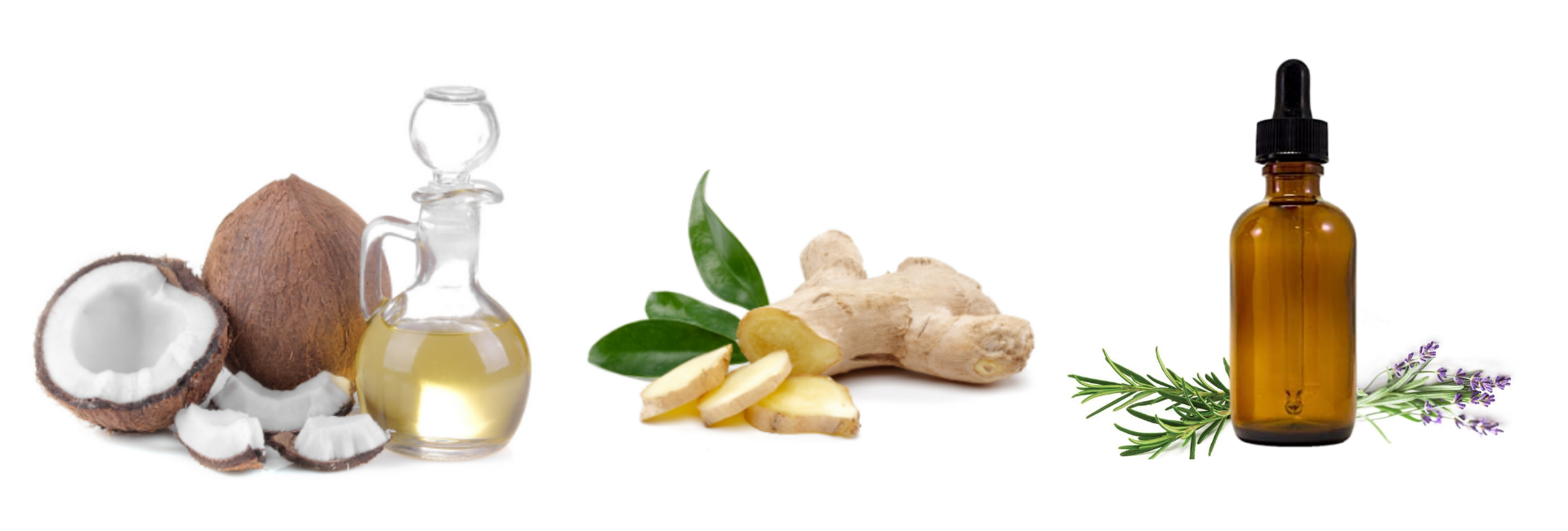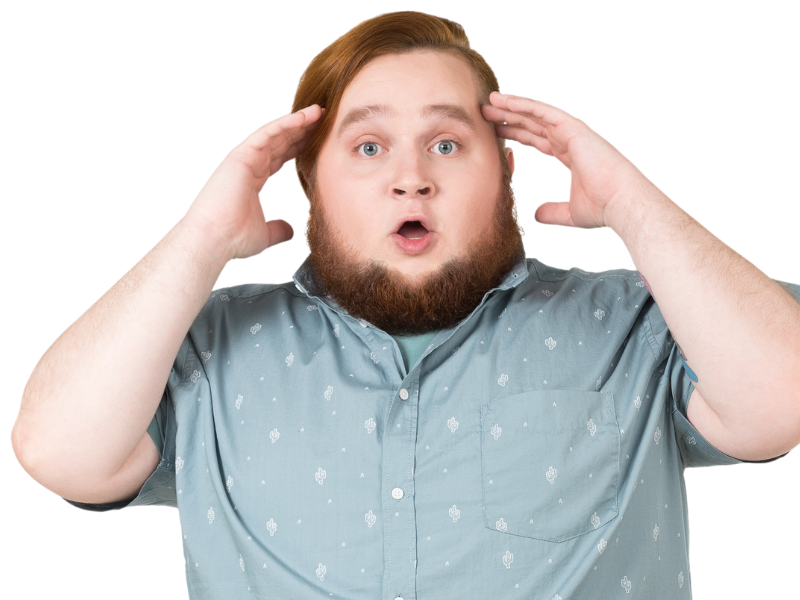Topamax and Hair Loss
Hair Regrowth Options – Discover What Works for Others
If you search online for “Topamax and Hair Loss” you will find many posts from people struggling with this problem and seeking advice. Just why and how Topamax causes hair loss for some users is not known, but more and more users are reporting this side effect.
Topamax is the brand name for the drug “Topiramate”. Other brand names include Trokendi XR and Qudexy XR. Topiramate is an anti-seizure drug taken to help prevent migraines. The NIH (U.S. National Institutes of Health) lists hair loss as a side effect of Topiramate. It can cause other mild-moderate to serious side effects including numbness, burning or tingling in the hands or feet, slow reactions, nervousness, headache, drowsiness, weakness, uncontrollable shaking of a part of the body, uncontrollable eye movements, weight loss, constipation, heartburn, change in the ability to taste food, dry mouth, nose bleed, watery or dry eyes, back, muscle, leg or bone pain, missed menstrual periods or excessive menstrual bleeding. Another more serious side effect is difficulty with speaking, concentrating, and thinking. Topiramate may also cause osteoporosis (a condition in which bones can break more easily) in adults and rickets (abnormal, curved bone growth) in children. It may slow the growth of children and may decrease the final height that children reach. For more information about Topiramate (Topamax) visit Medline drug database.
Talk to your doctor about the risks of taking Topiramate. If you experience a serious side effect, you or your doctor may send a report to the Food and Drug Administration’s (FDA) MedWatch Adverse Event Reporting Program online or by phone (1-800-332-1088).
Medications and Hair Loss: A large number of drugs may interfere with the hair cycle and produce hair loss. Drugs may affect anagen follicles through 2 main ways: (a) by inducing an abrupt cessation of mitotic activity in rapidly dividing hair matrix cells (anagen effluvium) or (b) by precipitating the follicles into premature rest (telogen effluvium). In anagen effluvium, hair loss usually occurs within days to weeks of drug administration, whereas in telogen effluvium, hair loss becomes evident 2 to 4 months after starting treatment. Here is a list of common drugs that have also been associated with hair loss.
Two Tactics for Combating Hair Loss: From the inside (nutritionally) and the outside (topical treatments)
TOPICAL TREATMENTS
Professional Hair Care Products – Many people have had success with the following products when applied regularly to hair and scalp:
Nioxin shampoo is often recommended for cancer patients who lose their hair due to chemotherapy. Nioxin can be found in many retail stores, beauty supply stores, and online. Another extremely popular herbal hair-care product line with great feedback for hair regrowth is Pura D’or.
PURA D’OR Biotin Original Gold Label Anti-Thinning (16oz x 2) Shampoo & Conditioner Set has over 17,000 purchases and a 4.5 rating on Amazon.
Biotin Shampoo for Hair Growth B-Complex Formula for Hair Loss (Almost 22,000 reviews on Amazon and an impressive 4.5 star rating)
This product advertises that it removes DHT for thicker fuller hair, anti-dandruff Formula with zinc, tea tree oil extract, jojoba oil, and argan oil for women and men. An 8 oz bottle of shampoo is 9.95 and the condition is 18.95.
Oil Mixtures – The scalp contains glands that produce sebum, the skin’s natural oil. The oil that the scalp produces is light and only keeps the skin lubricated and the hair waterproof. Hair washings, wind exposure, and dead skin strips away natural oil causing frizziness, dry, itchy, flaky scalp, and hair loss. All of these can also lead to a lack of hair growth. Oil mixtures can be an all-natural solution for hair loss. Here are some hair regrowth options:
Ginger Root & Coconut Oil for Stimulating Hair Regrowth – Purchase fresh ginger root from the produce department of your grocery store and a jar of coconut oil. It will be solid but easily melts at warm temperatures or when heated. Dropper bottles for storing and applying may be purchased online, Amazon, and Wholefoods markets.

Preparation: Peel and slice ginger into small pieces to fit in a blender or food processor. Blend to a pulp (do not add water) and then place the ball of pulp on a thick towel, wrap and squeeze the juice into a bowl. Melt the coconut oil by placing it in a small bowl and then placing the bottom of the small bowl into a larger bowl filled with hot water. Never microwave the oil or it will destroy the beneficial properties. Add the squeezed ginger juice to the coconut oil and mix with a spoon. You may put this concoction in a plastic or glass jar, bowl, or bottle for storage. Glass is best as you can place it in warm/hot water to melt each time you want to use it. If you store it in a bottle with a dropper it is easy to apply with the dropper to your scalp.
You can also use a small paintbrush or drizzle it on with your fingers. Massage into your scalp. You can tie up your hair or pin it back while the mixture stays on your scalp for at least 2 hours before washing it off with cold water. Shampoo and condition as normal. You may also use it before bedtime, put a plastic shower cap on your head or lay your head on a towel when you sleep due to the slight oiliness. You can wash out in the morning with your regular shampoo. The great properties of ginger and coconut oil will nourish your hair, prevent breakage, and stimulate hair growth. Use it regularly at least 3 times a week if you have hair loss problems and don’t just want to stimulate your hair follicles, prevent dandruff, and keep your hair nourished. Here is a great online video with step by step instructions. Ginger Root Coconut Oil Treatment Video.
ESSENTIAL OIL TREATMENTS – Essential oils are highly concentrated botanical extracts. Often, it takes several pounds of a single plant to make one essential oil bottle, which means that these liquids are incredibly potent and should always be mixed with a carrier oil such as jojoba oil, grapeseed oil, or even olive oil.
Rosemary Essential Oil (herb) – Using rosemary oil for hair loss is one of the most effective, natural solutions. Although it’s not clear how rosemary works for hair loss, applying it to the scalp stimulates the skin and increases blood circulation. In addition to stimulating circulation, rosemary essential oil destroys any bacteria that could clog hair follicles.
Note: Never use essential oils full strength, directly on the skin. Dilute with a carrier oil (jojoba, grapeseed, olive oil, etc. – (3 tsp of carrier oil to 10 drops rosemary essential oil).
Rosemary for Daily Use – You may also use rosemary oil for hair loss on a daily basis through scalp massage and with daily shampooing. For a daily massage to stimulate new growth, add two drops of rosemary oil to one ounce of jojoba oil. Rub into the scalp for three minutes in the morning before showering. Another tip for nourishing your hair on a daily basis is to add rosemary to your shampoo or conditioner. Use one drop of oil for every four ounces of shampoo or conditioner. For hair loss, rosemary essential oil blends well with lavender, sage or peppermint. If blending, use half rosemary essential oil and half of your choice of another oil.
Hot Oil Hair Treatment – Once a week use a hot oil treatment for your hair and scalp. Combine 5 drops of rosemary essential oil with 3 tablespoons of extra virgin olive oil in a small jar with a lid. Warm the oil-rosemary solution by placing the jar in a bowl of hot water (recently boiled) the oil is warm. Comb through damp hair. Wrap a bath towel around your head to keep in the heat and let stand for 20 minutes or more. The rosemary treatment and heat will increase circulation to the scalp and you should see an improvement in hair growth
Lavender & Other Essential Oils for Hair Growth – This is a treatment that has been recommended for people with Alopecia areata (a type of hair loss that occurs when your immune system mistakenly attacks hair follicles, which is where hair growth begins). This essential oil blend includes lavender, thyme, rosemary, cedarwood, plus the carrier oils jojoba and grape-seed (a carrier oil dilutes the essential oils and aids in the delivery of their healing properties without irritation).
To make an essential oil blend, mix the following:
3 drops of lavender oil
3 drops of rosemary oil
2 drops of thyme oil
2 drops of cedarwood oil
4 tsp. of grapeseed oil
1/2 tsp of jojoba oil
Mix the oils well before massaging the oil into your scalp. Apply to a small patch of your scalp before putting it on your entire scalp, to see how your skin reacts. If you do not have a negative reaction, massage the mixture into your scalp five minutes, being sure to cover bald or thinning spots. If the lavender oil becomes overwhelming to your senses, add a little more of one of the carrier oils (grapeseed, jojoba, or even olive oil) to further dilute the mixture. Try not to dilute the oil too much, though, because you may lose the benefit. After you’re done, cover your hair with a towel. It’s suggested, that to see the best results, one should do this routinely for at least seven months. Apply before bed, and wash your hair in the morning.
(scroll down for more causes of hair loss)
NUTRITIONAL SUPPORT
Many people experience ongoing benefits with foundational and targeted nutritional support from dietary supplements (vitamins, minerals & herbs).
Biotin – is a member of the B-vitamin family known as Vitamin B7 and helps with cell growth and blood sugar maintenance. It has been proven to help hair grow stronger and longer and it also helps strengthen your nails. It has even been shown to reverse premature graying. It is especially important to the skin cells as they are frequently replaced due to their exposure to the outside environment. Biotin also protects the nervous system, preventing seizures, ataxia, and loss of muscle tone.
Biotin is great for stress because it’s an important component of the nerves. Stress can cause hair loss so adding biotin to the diet gives protection both to the hair follicles and to the nerves that support their proper function. Check the supplement bottle for the recommended dosage. Many people start with 1,000 mcg. for hair loss with a possibility of increasing up to 5,000 if they are not experiencing success at a lower dose.
Nutrafol Hair Regrowth Supplement
This dietary supplement has 4.5 stars on Amazon and some great reviews. There is a “Nutrafol for Men” and “Nutrafol for Women” (a second product for women called “Nutrafol Women’s Balance” doesn’t seem to have as many purchases or reviews on Amazon as the regular Nutrafol Women product. Here is an ingredient overview:
PATENTED SYNERGEN COMPLEX: Hydrolyzed Marine Collagen Type 1& 3, Sensoril® Ashwagandha Root (10% withanolides), Saw Palmetto CO2 Extract (>45% fatty acids), Curcumin (>45% curcuminoids), Full spectrum palm extract (20% tocotrienol/ tocopherol complex), hyaluronic acid; NUTRAFOL BLEND: Lysine, Methionine, Cysteine, Horsetail extract, Japanese Knotweed Extract (50% resveratrol), black pepper extract, capsicum extract (2% capsaicinoids); Vitamin A (Beta carotene), Vitamin C, Vitamin D (cholecalciferol), biotin, iodine (from organic kelp), zinc, selenium (as selenomethionine). Collagen derived from North Atlantic Cod. Does Not Contain: Gluten, Soy, Shellfish, Binders.
Directions- Take four (4) capsules once daily with a meal. For best results, take for a minimum of 6 months and beyond. Do not exceed the recommended dosage.
Propidren by HairGenics – DHT blocker & hair growth formula states it was formulated to prevent hair loss and stimulate hair follicles to stop hair loss and regrow hair. It may be more for people (mostly men) who have inherited hair loss such as male pattern baldness. All of us, both men and women, have hormones called androgens which control hair growth, among other things. One specific androgen is called dihydrotestosterone (DHT). An androgen is a sex hormone that contributes to the development of what is thought of as “male sex characteristics” such as body hair. But it can also make you lose your hair faster and earlier. High levels of androgens, including DHT, can shrink your hair follicles as well as shorten this cycle, causing hair to grow out looking thinner and more brittle, as well as fall out faster. DHT can also make it take longer for your follicles to grow new hairs once old hairs fall out. It is believed that blocking DHT will help grow hair. If too much DHT interferes with hair follicles, it upsets the normal growth cycle and hairs don’t develop fully. Follicles produce shorter, thinner hair. The thinner hair falls out faster. To make things worse, the follicles then don’t start producing new hairs as quickly as they should. Again, this is more related to hereditary hair loss and not medication-use.
Magnesium, Riboflavin and Feverfew – clinically shown to provide nutritional benefits to migraine sufferers.
- Magnesium (mineral)- Studies have shown migraine sufferers with poor cerebrovascular tone have low levels of magnesium. Magnesium has numerous effects that support cerebrovascular tone and function including the following mechanisms of action: Inhibition of platelet aggregation, interference with synthesis, release, and action of inflammatory mediators, inhibition of vasospasm, stabilization of cell membranes and direct alterations of cerebrovascular tone.
- Riboflavin (vitamin) – Research has shown that a mitochondrial defect may reduce an individual’s threshold to migraine triggers. A deficiency of mitochondrial energy has been observed in many people exhibiting poor cerebrovascular tone.
- Feverfew (herb) – Scientific studies show feverfew supports a healthy neurological system and head comfort by inhibiting blood platelet aggregation and the release of serotonin from platelets and polymorphonuclear leukocyte granules. Feverfew also inhibits vasospasms.
Comprehensive Combination Supplements
MigreLief Nutritional Regimen
MigreLief is a dietary supplement available in 3 daily formulas to support healthy cerebrovascular tone and function and a fast-acting “as-needed” formula for neurological comfort.
The MigreLief Regimen consists of taking a daily MigreLief supplement every day and MigreLief-NOW as-needed.
MigreLief Original – Daily nutritional support for teens and adults with migraines
Children’s MigreLief – Daily nutritional support for kids age 2-12 with migraines
MigreLief+M – Daily nutritional support for women with hormonal/menstrual migraines
Note: MigreLief+M contains the same triple therapy as Original MigreLief + 5 additional ingredients that help balance hormone and blood sugar fluctuations (well-known migraine triggers).
MigreLief-NOW (fast-acting) on-the-spot nutritional support for cerebrovascular comfort (age 2-adult).
Although many people experience benefits in as little as 3 weeks, MigreLief (Original, Children’s, or +M) should be taken for 90 days to achieve maximum effectiveness. During this build-up period, MigreLief-NOW may be kept on hand at all times and taken “as-needed.”
MORE CAUSES OF HAIR LOSS
In addition to medications, the following can also lead to hair loss:
- Hormonal changes, including menopause
- Increased production of DHT, a form of testosterone
- Stress
- Alopecia, or pattern baldness
- Nutrient deficiencies
- Thyroid issues, especially in regards to an iodine deficiency
- Illness and medication
For hair loss in general, maintaining a healthy lifestyle will promote hair growth. Eating a healthy diet and getting plenty of sleep to regenerate cells and promote overall health is very important. Foods rich in iron, vitamin A & D are known for supporting healthy hair; spinach, bok-choy, carrots, sweet potatoes, nuts, fish, chicken, and blueberries, to name a few, all will contribute to healthier hair. Staying well hydrated while avoiding stress and other well known migraine triggers is key for migraine control as well.
OTHER RESOURCES – Follow the links below to additional online forums discussing hair loss and Topamax.
MedlinePlus, an informative drug database and service of the U.S. National Library of Medicine and National Institutes of Health provides a lot of information, but does not seem to mention anything about hair loss.
Can Topamax Cause Alopecia? – 2015 study
Topirimate (Topamax) and Severe Hair Loss
Topamax and hair loss suggestions? – MDJunction
- UPDATE (WebMD removed this post:
www.mdjunctiohttp://www.mdjunction.com/forums/migraine-headaches-discussions/general-support/1002723-topamax-and-hair-loss-suggestionsn.com/forums/migraine-headaches-discussions/general-support/10… I have been on 75mg of topamax for the past 8 months. I lost around 12 lbs. but I’ ve noticed that my hair has been falling out. I take many … -
Hair loss and Topamax – Weight Loss Alternatives – MedHelp
www.medhelp.org/posts/Weight-Loss-Alternatives/Hair-loss-and-To… – Similar to Hair loss and Topamax – Weight Loss Alternatives – MedHelp Sep 4, 2006 … I have been prescribed Wellbutrin for depression and Topamax as a mood stabilizer. The combination worked very well for me and the bonus …
-
Topamax: Topamax and Hair Loss
topamax.livejournal.com/29337.html Apr 4, 2007 … Topamax and Hair Loss. Greetings! My rheumatologist put me on 200 mg Topamax for fibromyalgia. I was on 100 mg topamax for migraines, …
-
Hair loss from Topamax TOO????? in Migraine Headaches Forum
thetopamaxtrip.yuku.com/topic/687 Nov 21, 2005 … I have been reading posts in various forums and am upset to hear that Topamax can also cause hair loss. I did a search on Web MD and this is …
-
Hair loss due to Topamax? – Women’s Hair Loss Project Forum
forum.womenshairlossproject.com/showthread.php?t=2910 Has anyone else had hair loss due to Topamax? I’ve been told by one doc that’s what caused mine but I’m not convinced. If anyone else has …
-
When Does Hair Loss Come Usualy? – Topamax (topiramate) – The …
www.crazymeds.us/CrazyTalk/index.php?/topic/15343-when-does-hair-loss-come-… I have been on it six months or so did not notice any side effects but people say they lost hair? wtf? Just wondering when would such a horrific …
Is “Hair Loss” Even Listed as a Side Effect?!
It’s always good to read the warnings regarding side-effects before starting a new drug. However, many people have stated that hair loss is not listed as a side-effect of Topamax. It doesn’t appear that hair loss is mentioned anywhere, confirming the frustration of so many migraine sufferers – they didn’t expect it, making it all the more aggravating. But if you take a closer look – the hair loss information may be there, but in disguise, referred to as Alopecia.
According to the official Topamax website, the common side-effects are numbness and tingling in the arms and legs, fatigue, taste change (food and drink tastes different), difficulty with concentration, and difficulty with memory. Hair loss is not mentioned. Serious Topamax side-effects are described in the manufacturer’s Important Safety Information section.
Topamax and Hair Loss – What Can You Do?
Visiting online forums is a good way to read the stories of others who are experiencing the same dilemma and discover what is or isn’t working. Nutritional options and remedies are also shared. You’ll see that users share their frustration about their hair loss from Topamax, and about being uninformed of this side-effect …with a few people stating it could take a year for hair to grow back once stopping Topamax. However, there are many who are experiencing regrowth as they supplement their nutritional deficiencies, and others who benefit from the information provided in the Hair Loss Black Book, and the Women’s Hair Loss Project is also another resource.
Additional Information:
MedlinePlus (U.S. NIH National Library of Medicine) Topirimate Info & List of Side-effects
Topiramate may cause other side effects. Tell your doctor if any of these symptoms are severe or do not go away:
- numbness, burning or tingling in the hands or feet
- slowed reactions
- nervousness
- headache
- drowsiness
- weakness
- uncontrollable shaking of a part of the body
- uncontrollable eye movements
- weight loss
- constipation
- heartburn
- change in ability to taste food
- dry mouth
- nosebleed
- teary or dry eyes
- back, muscle, leg, or bone pain
- missed menstrual periods
- excessive menstrual bleeding
Some side effects can be serious. If you experience any of the following symptoms or those listed in the SPECIAL PRECAUTIONS section, call your doctor immediately:
- blurred vision
- loss of vision
- double vision
- eye pain
- eye redness
- worsening of seizures
- feeling cold, chills, or low body temperature
- difficulty concentrating
- speech problems, especially difficulty thinking of specific words
- confusion
- memory problems
- loss of coordination
- pounding or irregular heartbeat
- chest pain
- shortness of breath
- trouble breathing
- fast, shallow breathing
- inability to respond to things around you
- excessive tiredness
- diarrhea
- nausea
- vomiting
- stomach pain
- loss of appetite
- intense back or side pain
- bloody, cloudy, or foul-smelling urine
- constant need to urinate
- difficulty urinating or pain when urinating
- fever or other signs of infection
Topiramate may cause osteoporosis (a condition in which bones can break more easily) in adults and rickets (abnormal, curved bone growth) in children. Topiramate may also slow the growth of children and may decrease the final height that children reach. Talk to your doctor about the risks of taking Topiramate.
Topiramate may cause other side effects. Call your doctor if you have any unusual problems while taking this medication.
If you experience a serious side effect, you or your doctor may send a report to the Food and Drug Administration’s (FDA) MedWatch Adverse Event Reporting Program online or by phone (1-800-332-1088).
About AKESO
AKESO formulates world class dietary supplements that provide nutritional support for the most common health issues that concern people most, such as migraines, headaches, joint health, stress & anxiety, memory, sleeplessness, ADHD, and more. Changing lives is the reasons we wake up every day passionate about the special products we provide to our customers. Helping you to get well and stay well is our bottom line.


